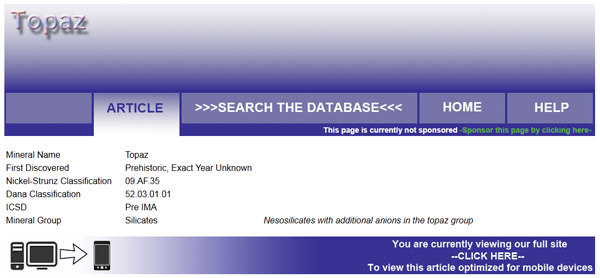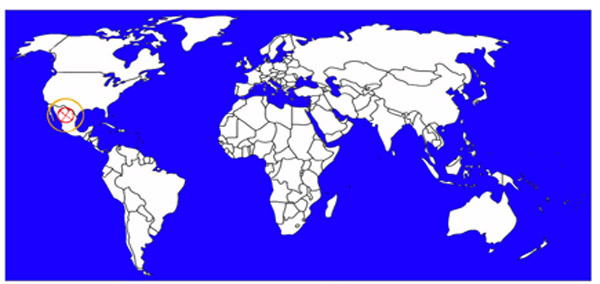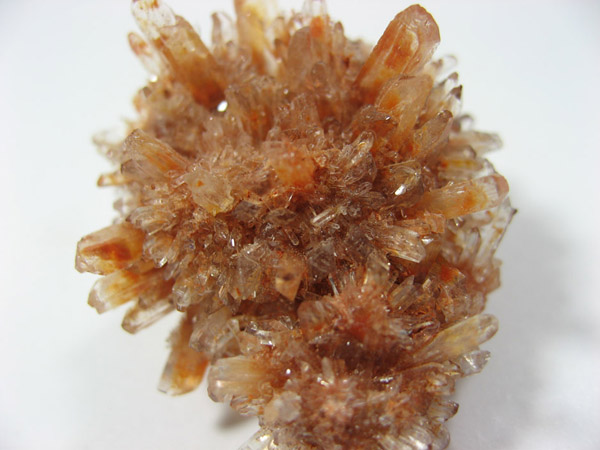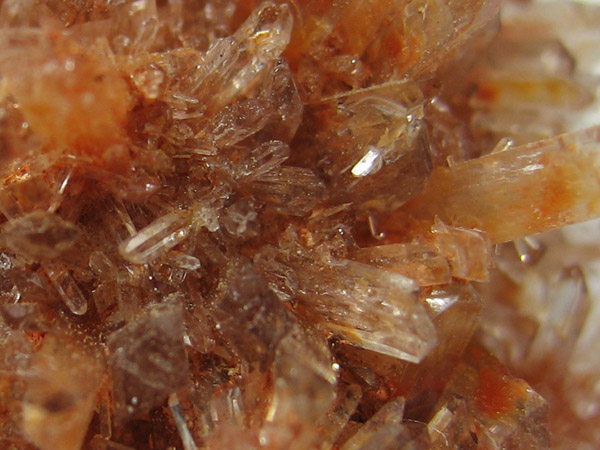

Welcome to the Mineral, Rock, Organic, Fossil, Sand, and Silt Database (MIROFOSS) mineral article help page. This page shows the layout of information for mineral articles that can be found in the MIROFOSS database. Please note that the help pages have been written as a simple reference guide in relation to the MIROFOSS database. For more information about minerals and their properties. Please visit the Lessons and Tutorials page which can be found in the mineral database index. |

Through-out the research, design, and development of MIROFOSS, care has been taken to ensure all pages within the database follow the same consistent format. This consistent format is referred to as MIROFOSS Standards Principles (MPAS.) MPAS was developed to ensure that all articles follow the same pattern and are easy to navigate to find specific data. All mineral article toolbars and other sections of the mineral gallery are shown in various shades of blue. Active and visited links are also shown in a blue colour. The colour remains consistent through out the mineral gallery so the user knows where they are in relation to the other MIROFOSS database pages. Each article is displayed in an article frame (parent frame) which has a main page which is located in the left frame of the browser and an image page, or thumb guide, which is located in the right frame of the browser. The parent frame also contains a hidden text version of the article for computers that cannot read frames. Within each image section for an article, images are organized based on detail and magnification. Various anti theft devices have been put in place on MIROFOSS articles to protect them from digital piracy. If further assistance is required in relation to article ease of use, please -contact us-. |
 |
The name of the mineral is displayed at the top of the image frame. | |
| The camera icon shows how many images, if any, can be found within MIROFOSS | ||
| The cursor icon advises that more information can be found by clicking on an image. | ||
| The scroll icon advises that you may need to scroll down the page to see more images | ||
| The copyright icon allows you to access the MIROFOSS copyright information along with our FAQ and contact information. | ||
Each sample found in MIROFOSS is given a unique collection number which can be seen underneath the mineral sample along with the country of origin for the sample. The unique collection number is refereed to as the 'Dynamo Collection Number' and is created using information from the Nickel-Strunz classification system as well as date information of when the mineral was acquired. Using the mineral sample shown to the left, we can further explain the Dynamo Collection Number: C - The mineral name is 'creedite' therefore, the first character is 'C' |
||
The Smugmug icon, formally Twenty20™, opens a new tab in your browser to the MIROFOSS Smugmug gallery. This is where high quality images of MIROFOSS samples can be purchased, with proceeds going to the MIROFOSS foundation.
|
||
| The Stock Image icon opens a new tab in your browser which will direct you to the MROFOSS stock footage gallery where you can purchase digital copies of an image directly from MIROFOSS. | ||
If you feel that MIROFOSS is doing a great job and you wish to help us out, click on the Donate to MIROFOSS icon. This icon will open a new tab in your browser where you can help out by making a financial contribution, sample contribution, and even sponsor an entire article.
|
||
| Want to keep up to date with MIROFOSS? Click on any of the social media icons to be brought to our various social media sites. |
 |
The image located to the left is an example of the toolbar which is located at the top of every mineral image article in the database. By using the buttons on the toolbar; You can navigate to the MIROFOSS search page, go back to the mineral index page, get help on various web and mineral related topics, as well as navigate between mineral varieties and alternate mineral names linked to the main topic. |
The information located directly below the toolbar gives information about how the mineral is classified in various types of mineral catalogues, where this specific mineral sample was found, and a description of the mineral sample.
Located below the toolbar and information table is the mobile interaction bar. This bar allows you to travel from our main desktop site; to a more 'mobile friendly' site which works better on mobile phones as well as tablets. |
 |
|
| The Sample Map shows the approximate location of where the sample was discovered. The location is marked with a red 'X' with an amber circle around it. |
 |
The ruler image is used to show the actual size of the mineral sample in relation to practical measurement. |
 |
The preview image is used to show the mineral under ideal conditions. - There is no scale on the image |
 |
The macro image is used to show a detailed focused section of the mineral sample - The image is shot in macro mode |
 |
MIROFOSS takes steps to avoid image theft. This information bar is provided at the bottom of every image page to reinforce our commitment to reduce image theft and provide a link, which will open in a new browser tab, which will direct you to where to purchase digital copies of our images. |